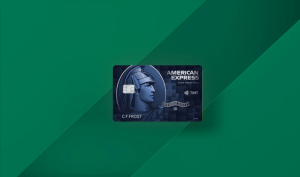The foreign exchange market, often called the forex market, is the most active commodities market in the entire world. On a daily basis, the forex market can experience $6 trillion (or even more) of activity, dwarfing the activity found on the stock market, the bond market, and all other marketplaces.
Forex trading, in general, is useful for a variety of reasons. The world’s most popular currencies, especially the American Dollar, are relatively stable, meaning that with every position you open, there will be a limited amount of risk. The structure of this market allows traders to use large amounts of leverage and access positions they otherwise could not afford. Furthermore, forex trading is an excellent option for diversifying a financial portfolio and for pursuing new investment opportunities.
If you are interested in investing in the forex market, you are certainly not alone. According to some estimates, there are likely more than 75 million people trading forex currencies on a regular basis (about 1 percent of the global population). However, one of the things that—perhaps surprisingly—makes the forex market a bit tricky is that it can be relatively difficult to access.
Rather than creating a separate forex account, some traders—especially relative beginners—prefer to access the forex market indirectly. By using exchange traded funds that are connected to specific Exchange Traded Funds (ETFs), you can hold a currency “position” without actually holding any of the currency. In this article, we will discuss the most important things to know about ETFs and using currency ETFs in particular.
What is an ETF?
An exchange traded fund (ETF), as defined by Bank Rate, “offers investors a way to pool their money in a fund that invests in stocks, bonds, and other assets and then receive a stake in that pool.” An S&P 500 ETF, for example, will have a position in all (or most) of the stocks that appear on the S&P 500 index. This enables traders to effectively enjoy the growth of the index as a whole, without the need to purchase 500 different companies stocks on their own. ETFs can come in many different forms and, more often than not, these funds make it much easier for traders to access large, often complex positions. Many ETFs will try to directly replicate the performance of large mutual funds, such as Black Rock, thus making it easier for small-scale traders to increase their range of possible investment options.
What is a Currency ETF?
From 1940 until 2004, ETFs were allowed, though currency and commodity ETFs were not. However, over the course of the past 16 years, we have witnessed an incredible increase in the use of currency ETFs. Currency ETFs, as the term might imply, are exchange traded funds that enable traders to access a specific currency position. These ETFs can help traders access a single currency and they can also help traders hold positions in multiple currencies at once. Due to the dynamic nature of ETFs, traders can control their ongoing exposure to risk and, consequently, they can also control their potential to earn strong returns.
How Do Currency ETFs Work?
Currency ETFs work the same way as other ETFs: a trader can purchase an ETF on the open market, via the New York Stock Exchange (NYSE), NASDAQ, and various other exchanges. Rather than directly owning the underlying currency, the trader will hold an ETF share. Ideally, the value of that share will increase over time, enabling that trader to increase their wealth. Once the trader believes the share has reached its peak value (likely because the underlying currency is at the top of a price channel), they will then be able to exit their position and lock in their profits.
What are the Most Popular Forex Currencies? Popular Currency ETFs?
In forex trading, the American Dollar (USD) is overwhelmingly considered to be the most important currency in the world. In fact, according to some estimates, the Dollar was used in 88 percent of all forex trades that occurred in 2019. Generally, most exchanges involve the dollar and one other stable currency, including the Euro (EUR), British Pound (GBP0, Japanese Yen (JPY), Canadian Dollar (CAD), Swiss Franc (CHF), Australian Dollar (AUD), and New Zealand Dollar (NZD). The most popular currency pair that does not involve the dollar is GBP: EUR.
Generally, Invesco Currency Shares—and their many variations—will be the best ETFs for forex trading. Invesco offers ETFs for each of the currencies mentioned above. Generally, these currencies are fairly stable. For example, the Invesco CurrencyShares Japanese Yen Trust (FXY) has had its price be contained with the $81 to $91 range since 2016. WisdomTree Bloomberg US Dollar Bullish Fund (USDU) is another ETF that is ideal for traders to hold a position in the Dollar when they believe it is about to increase in value
How can I Develop an Effective Forex Trading Strategy?
Developing an effective forex trading strategy will require you to have a firm understanding of the variables that drive a given currency’s value and to also consistently pay attention to the news. Fundamentals, such as job figures, monetary policy announcements (such as those coming from the Federal Reserve), GDP numbers, and other indicators can all move the underlying currency in either a positive or negative direction.
If unemployment begins to decrease, as the numbers from May 2020 have suggested, and if this decrease is better than what economists projected, then the underlying currency will rally as a result. Keeping track of when specific figures are expected to be released (and there are many forex calendars that make it easy to do so) will help you know when it might be the right time to enter into or exit out of a given position. Using technical indicators, particularly Bollinger Bands, can also be very helpful.
Are there Other Commodities I can Access Using an ETF?
In this article, we have seen how ETFs can be used in order to indirectly access a currency position. These ETFs can be useful for many reasons: they have some tax advantages, they can be accessed without a forex trading account, and they still move in the same direction as their underlying currencies. With this being said, you might also assume that there are ETFs that make it easier to access other “complex” marketplaces. Real estate ETFs, cryptocurrency ETFs, pink sheet ETFs, bond ETFs, and commodity (gold, oil, etc.) ETFs can help you increase your current level of diversification and improve your trading outcomes.
Four Fundamental Rules for Becoming an ETF Trader
To become good at ETF trading can become a simpler task. By adopting some techniques, an investor can perform like a pro-traders. Thousands of rules are there to aid the investor to improve his skills. However, investigating thousands of rules and trying to make millions is a very difficult task. To simplify the method of hopefully making money, there are 4 fundamental rules of trading ETFs successfully. Let’s know about these.
Basics of ETF trading
Traders need to ask themselves whether they know the ETF industry. If not, it is time to know more about ETF. Taking frequent trades without having a better cognition about this field is never provides good outcomes. Investors have to keep their concentration on their long-term objectives and do not take high risks. It is possible if they have sound cognition about value dynamics. Investors often become bewildered as they do not have the capabilities to conduct the market data. Making money and living their life is not so simple. If they desire to survive in trading, they have to stick to the main concept of trading. So, what is the main notion of trading? If the investor takes aggressive measures and tries to make a huge amount of money, it is just a matter of time until they blow up their trading account.
Many retail traders prefer to deal with exchange-traded funds. But ETF trading is very tough and the investor needs to know a lot about the market. In the learning stage, you may get confused but you do have the options to improve your knowledge in the practice trading account.
Will for learning
Investors have to be open to gain cognition about ETF from scratch. Without having the thirst to know the details of this market, you will face failure constantly. It’s like traders’ currency trading business. They have to be very conscious about making the selection of the asset and only then they will get high-quality trades. Being an excited investor, he may think that he knows everything. However, no one can ensure that they know each and everything in this field. Because of the unpredictable nature of the field, the investors need to learn properly. Contemplate yourself as a pupil when you trade ETF. Those who desire to contemplate them as an investor, must not be in this process. It is more about knowing new facts rather than taking some assets. So, the investor needs to follow this rule very consciously.
Do not take the high risk
The person cannot trade with high risk as it can create difficulties. Taking the asset with high risk put great difficulties to their trading career. Investors become frustrated and quit the market after losing a few assets. As the volumes are too big, it is not possible to regain the losing money. However, blowing the account is not the termination of the career. Traders can always come back and implement a trade with leading experts. However, during a break, the investor must learn how this market works. They must jump to the real market with an effective trading approach. If it is too tough, they should take a rest for some time.
Never loss confidence
Traders cannot afford to lose confidence. If the person loses confidence in trading, he will blow up his account at any time. They can exist in a subsidiary if they do not feel like trading. Taking rest is a good way to develop their performance. Stop hunting the trading field like a wild cat. Try to keep yourself calm down and embrace losing trades as a part of this trading process. When you begin to contemplate this as their process, they will take trades without plying any complicated data. Simplify the trading strategy to follow it properly. Be aware of the implementation of the trades. The wrong steps can create a big problem for you.








